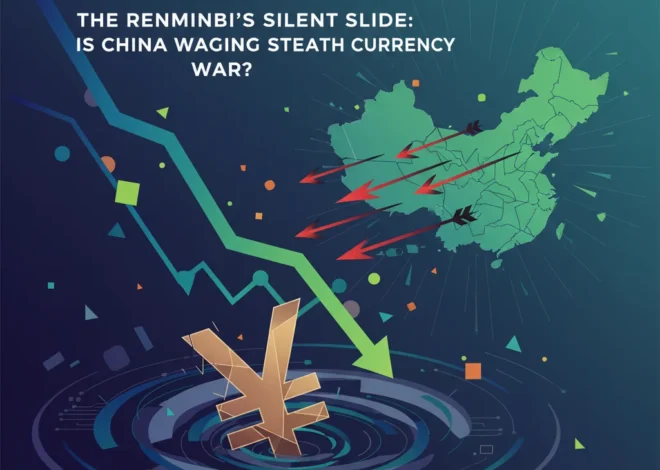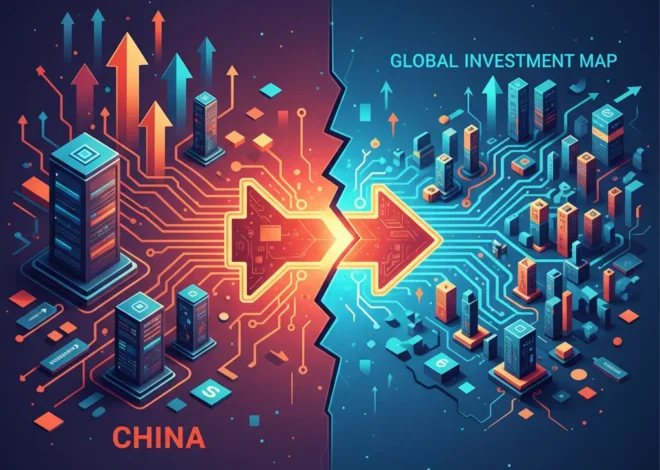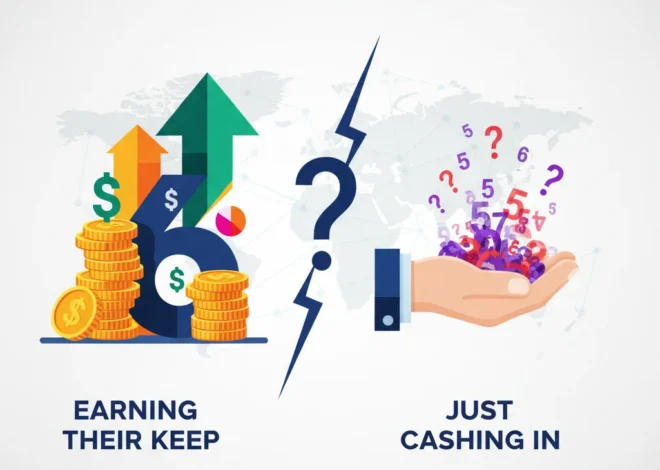
The Corporate Confessor: From Uber’s Architect to Veon’s Accuser
Introduction: The Whistleblower Who Won’t Quit
In the high-stakes world of global business, some names become synonymous with seismic shifts in corporate accountability. Mark MacGann is one such name. Many will remember him as the high-level executive turned whistleblower who exposed the inner workings of Uber’s ruthless global expansion, leaking a trove of over 124,000 documents that became known as the “Uber Files.” He was the architect of the very lobbying strategy he later condemned.
Now, MacGann has stepped back into the spotlight, but his target is different. This time, he’s aiming at Veon, a London-headquartered, Amsterdam-listed telecoms giant with deep, complicated roots in Russia. The allegations are explosive, touching on sanctions evasion, sanctioned Russian oligarchs, and a multi-billion-dollar deal he claims is a “sham.” For investors, business leaders, and anyone interested in the intersection of finance and geopolitics, MacGann’s second act is a critical case study in corporate governance, risk, and the immense power wielded by those who dare to speak out.
Act I: The Ghost of Uber Past
To understand the gravity of MacGann’s current claims, one must first revisit his past. As Uber’s chief lobbyist for Europe, the Middle East, and Africa, MacGann was no mere employee; he was a central figure in the company’s “ask for forgiveness, not permission” strategy. The Uber Files, which he leaked to The Guardian, revealed a calculated campaign to disrupt taxi industries worldwide, often by circumventing local laws and leveraging close relationships with top politicians.
MacGann’s decision to blow the whistle on a system he helped build was a profound act of public penance. He admitted to his role, expressing deep regret and citing the human cost of Uber’s aggressive tactics. This history is crucial because it establishes a precedent. He isn’t an outsider with a grudge; he’s an insider who has demonstrated a willingness to expose uncomfortable truths, even at great personal and professional cost. This background lends a unique, albeit complex, credibility to his new set of allegations against Veon.
The Million-Dollar Mistake: Why Deferring Your Pension Is a Bet Against Your Future Self
Act II: The Veon Connection and the Russian Dilemma
After leaving the chaotic world of Big Tech, MacGann joined Veon in 2021 as Chief Corporate Affairs and Compliance Officer. Veon operates in numerous emerging markets, but its most significant and problematic asset has long been its Russian business, VimpelCom. The company’s largest shareholder is LetterOne, a fund co-founded by Mikhail Fridman and Petr Aven, two Russian oligarchs who were sanctioned by the UK and EU following the 2022 invasion of Ukraine.
In the wake of the sanctions, Veon, like many Western companies, announced its intention to exit the Russian market. It struck a deal to sell VimpelCom to the unit’s local management team. On the surface, this appeared to be a responsible move—a clean break from a politically toxic and financially risky market. However, MacGann alleges the reality is far murkier.
He claims the sale is a “fraudulent transaction” engineered to benefit the very oligarchs the sanctions were designed to penalize. According to the Financial Times report, MacGann asserts he was fired in late 2022 for raising internal alarms about the deal’s structure. He argues that the terms effectively allow the sanctioned shareholders to repurchase the asset on favorable terms in the future, thus circumventing the spirit and letter of international sanctions.
The Great Man Effect: Why Your Investment Strategy Is No Match for a Single Leader
Deconstructing the Deal: Two Sides of the Story
The conflict boils down to fundamentally different interpretations of the VimpelCom sale. Below is a breakdown of the company’s official stance versus Mark MacGann’s explosive allegations.
| Aspect of the Deal | Veon’s Official Position | Mark MacGann’s Allegation |
|---|---|---|
| Purpose of Sale | A legitimate and complete exit from the Russian market in response to geopolitical events. | A “sham” transaction designed to temporarily park the asset until sanctions are lifted. |
| Deal Valuation | A sale price of RUB130bn (approx. $2.1bn at the time) reflecting market conditions and ensuring a clean break. | The structure, including debt arrangements, results in a very low effective cash price, making it an artificially good deal for the buyers. |
| Future Control | The sale transfers ownership to the local Russian management team, severing ties with Veon and its shareholders. | The deal is structured to allow sanctioned individuals, like Mikhail Fridman, to potentially regain control in the future. |
| MacGann’s Departure | His position was eliminated as part of a broader corporate restructuring. | He was terminated as a direct result of raising compliance and ethical concerns about the VimpelCom sale. |
Veon vehemently denies all of MacGann’s claims. The company maintains that the sale was fully vetted, approved by multiple regulators, and constitutes a complete and final exit from Russia. They frame MacGann’s departure as a standard business decision, unrelated to his alleged concerns.
Implications for Finance, Investing, and the Global Economy
This corporate battle has far-reaching consequences that should command the attention of anyone involved in finance and investing. It highlights several critical themes shaping the modern economy.
First is the immense challenge of enforcing sanctions. While governments can freeze assets and restrict individuals, complex corporate structures can create loopholes. This case questions the efficacy of corporate “self-sanctioning” and places a greater burden on investors to conduct deep due diligence on companies divesting from sanctioned nations. The role of **financial technology** and **banking** institutions as gatekeepers becomes paramount in scrutinizing such large-scale transactions.
Second, it’s a stark lesson in geopolitical risk for the **stock market**. Veon’s stock has been under pressure, and these allegations introduce a new layer of legal, regulatory, and reputational risk. For finance professionals, it underscores that a company’s value is not just tied to its balance sheet but to its ethical posture and its ability to navigate a treacherous global landscape. The core principles of **economics**—risk and reward—are on full display, with the potential for massive losses if MacGann’s claims are substantiated.
Finally, this story could catalyze discussions around transparency in corporate finance. Could emerging technologies like **blockchain** provide a more immutable and transparent ledger for asset transfers, making deals like the one MacGann describes harder to conceal? While not a current solution, it points to a future where sophisticated **trading** and ownership transfers could be subject to greater automated scrutiny, moving beyond reliance on internal compliance officers who may face retribution for speaking up.
St. James's Place's High-Stakes Gamble: Can a Titan of Finance Reinvent Itself?
Conclusion: The Price of Truth
Mark MacGann has positioned himself as a corporate confessor, a man seeking to right the wrongs of a system he once mastered. Whether his allegations against Veon are validated remains to be seen. Regulators in the US, UK, and Netherlands will likely face pressure to investigate, and the outcome could have a profound impact on Veon, its leadership, and its shareholders.
Beyond the fate of a single company, this saga forces a broader reckoning. It asks difficult questions about the nature of corporate responsibility in a fractured world. What is the true purpose of sanctions if they can be artfully sidestepped? And what is the real cost of whistleblowing for those who risk their careers to bring secrets into the light? For the worlds of finance and investing, the answers to these questions are not just academic—they are fundamental to assessing risk and value in the 21st-century economy.


